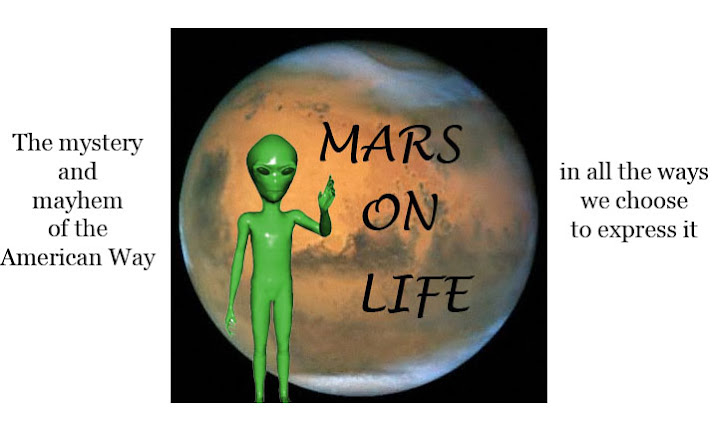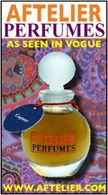 Rock* stagewear is a subcategory of fashion history that nearly vanished with the grunge movement and a resurgence of "indie cred," the we-the-people political edict that holds performers socially and morally responsible for the financial divide between the artist haves and the madding crowd have-nots. By adhering to fashion egalitarianism, the grunge performers became the day laborers and bricklayers of the music industry.
Rock* stagewear is a subcategory of fashion history that nearly vanished with the grunge movement and a resurgence of "indie cred," the we-the-people political edict that holds performers socially and morally responsible for the financial divide between the artist haves and the madding crowd have-nots. By adhering to fashion egalitarianism, the grunge performers became the day laborers and bricklayers of the music industry.
Although Bruce Springsteen before them bore the biography and stage apparel of the common working man, his blue-collar, hail-fellow-well-met sensibilities did not result in the expression of pathos in his music. Rather, his outlook was one of optimism: Let's grab a beer, he seemed to be saying, shoot the shit and play some pool. The flannel of grunge, on the other hand, was rooted in the dyspeptic Weltschmerz message of life as a cesspool of alienation.
The "indie cred" argument wasn't born of the commercial successes of Green Day and Nirvana. Twenty-five years before angry clubgoers attacked Dead Kennedys singer Jello Biafra for "selling out," Led Zeppelin suffered birth pains prior to the release of their inaugural album when word of their enormous financial deal was released. In the case of the grunge rockers, image was subjugated to the significance of emotional content in the music. In the seventies, however, the costume was king, with its fourth-wall artificiality and detachment between artist and fans.
The full fig of the seventies artists had no truck with sumptuary laws. When Led Zeppelin strode balls-out into the decade, they did so in pre-Raphaelite curls, dazzling tunics, and in the case of Jimmy Page, a Nudie suit. The gap between income and artistic credibility was buried in a landslide of flamboyant, cocky dress, not to reappear for another twenty-odd years.
British artists openly credited many of their musical influences as being American in origin. At the same time, it was apparent that some strong fashion inflection was similarly being made across the pond. The British rock bands adopted homecourt dandyism (The Rolling Stones, The Faces, The Kinks, Bryan Ferry); glam (Bowie, Bolan, Mott the Hoople, Queen); caravan chic (Brian Jones, Robert Plant, "Sixth Stone" Anita Pallenberg); and a style of American dressing that had its roots in two forms of purely American entertainment: rodeo and burlesque.
Both rodeo and burlesque attire relied on razzle-dazzle presentation, with rhinestones, fringe, and cultural motifs adorning brightly colored satin garments. In the case of rodeo, the flashiest costume represented the distaff, "lightweight" side of life on the range, whereas in burlesque the decorative aspects spoke to the need for heavyweight manipulation and tease.
Nudie Cohn (1902-1984) was born Nutya Kotlyarenko in Kiev, Ukraine. Emigrating to New York and then California, he began his career by making g-strings for strippers. After networking in the country music world and opening a store in Hollywood, he sought out iconic country performers and began outfitting them in his western wear. Notably, this included the king and queen of Rodeo Americana, Hollywood-style, Roy Rogers and Dale Evans. For Elvis he created a gold lamé suit that appears on the cover of the singer's 50,000,000 Elvis Fans Can't Be Wrong greatest hits album.
Country legend Porter Wagoner forged a life-long association with Nudie that became,along with his pompadour, Wagoner's visual trademark. The high embellishment of Nudie's creations soon spread the tailor's message to the hybrid country rock band The Flying Burrito Brothers and their guitarist Gram Parsons. It was through Parsons' involvement with Keith Richards on the latter's 1969 American Tour that the style jumped the Atlantic.
Nudie's cowboy suits carried rock-star price tags. An early-1950s suit for Porter Wagoner ran several hundred dollars; later they exceeded single digits. Like many Jewish immigrants of the early twentieth century, Nudie never forgot his impoverished past; he strode around Hollywood in a pair of mismatched boots.
It isn't clear where Nudie acquired his love and appreciation of the niche American culture he glorified through his western clothing designs. One might speculate that this sartorial derring-do in a  very visible way symbolically addressed the star-spangled freedoms of his adopted country. By initially designing for the homespun "heroes" of the country/cowboy culture, he became part of their folkways and the general, broadly sketched perception of them as guileless, all-or-nothing champions of the American way.
very visible way symbolically addressed the star-spangled freedoms of his adopted country. By initially designing for the homespun "heroes" of the country/cowboy culture, he became part of their folkways and the general, broadly sketched perception of them as guileless, all-or-nothing champions of the American way.
Link:
Nudie's Rodeo Tailor
Images: Gram Parsons © A&M records
Nudie and one of his cars from The New York Times
Porter Wagoner from www.porterwagoner.com
*Lest I be considered a fogey, I parsed this post strictly in terms of rock fashions from the sixties and seventies; therefore Gwen Stefani, etal--or anything with dancers--was not taken into consideration.
Tuesday, December 4, 2007
Star-Spangled Swathe: Nudie's Rodeo Tailor
Labels:
Nudie's Rodeo Tailor
Subscribe to:
Post Comments (Atom)









7 comments:
GREAT POST! I love Nudie!
Why thank you kindly, little lady.
(I was wondering how many of us are familiar--and you popped up! But you are the Queen of Esoteric Style!)
hello suzanna!
thanks for adding me to your links :) you sure are knowledgeable though!
Very knowledgeable indeed. I know nothing about Nudie so thanx!
Riz, I thought people might not be familiar with his work; it is a charming American success story that has wonderful, quirky elements and a lot of bravura.
My first BF, that many years ago, once mentioned wanting a "Nudie suit," and I had a mental picture of him, wearing a see-through outfit, embarrassing himself at the local bowling alley.
Oh Nudie suits! The joy! I was the talking head on the Five Live obit programme when Bobbie Nudie died in summer 06. A fascinating life. LLG xx
Indeed, and I think a unique celebration of America and Americana. They don't build 'em like that anymore.
Post a Comment